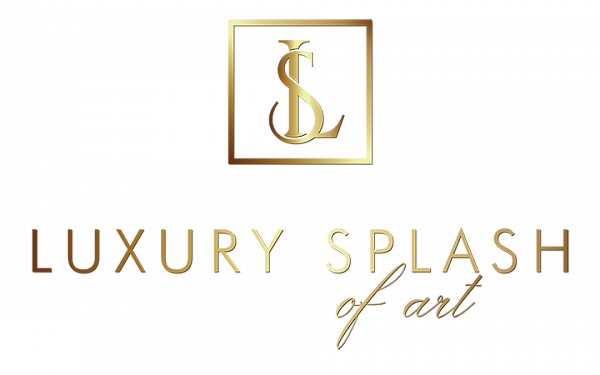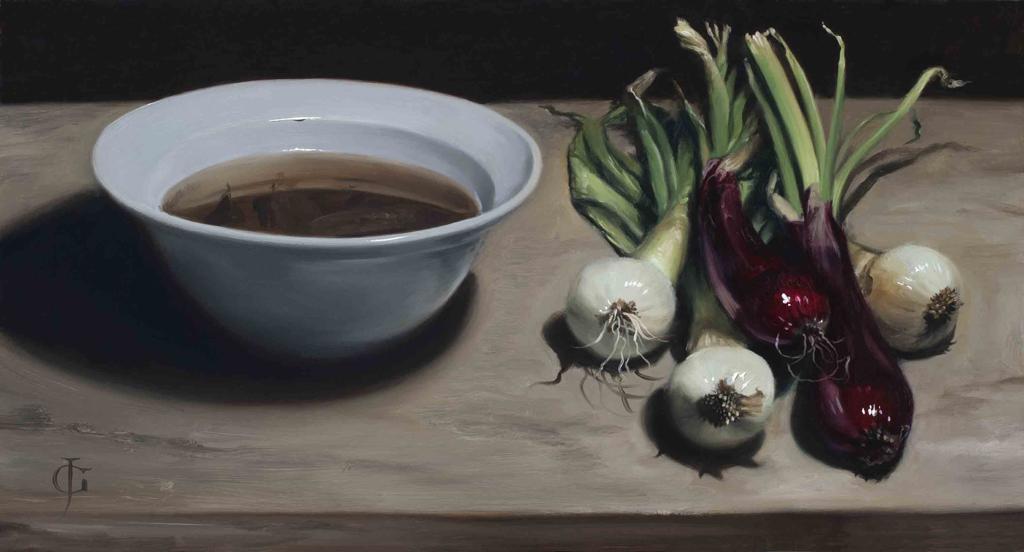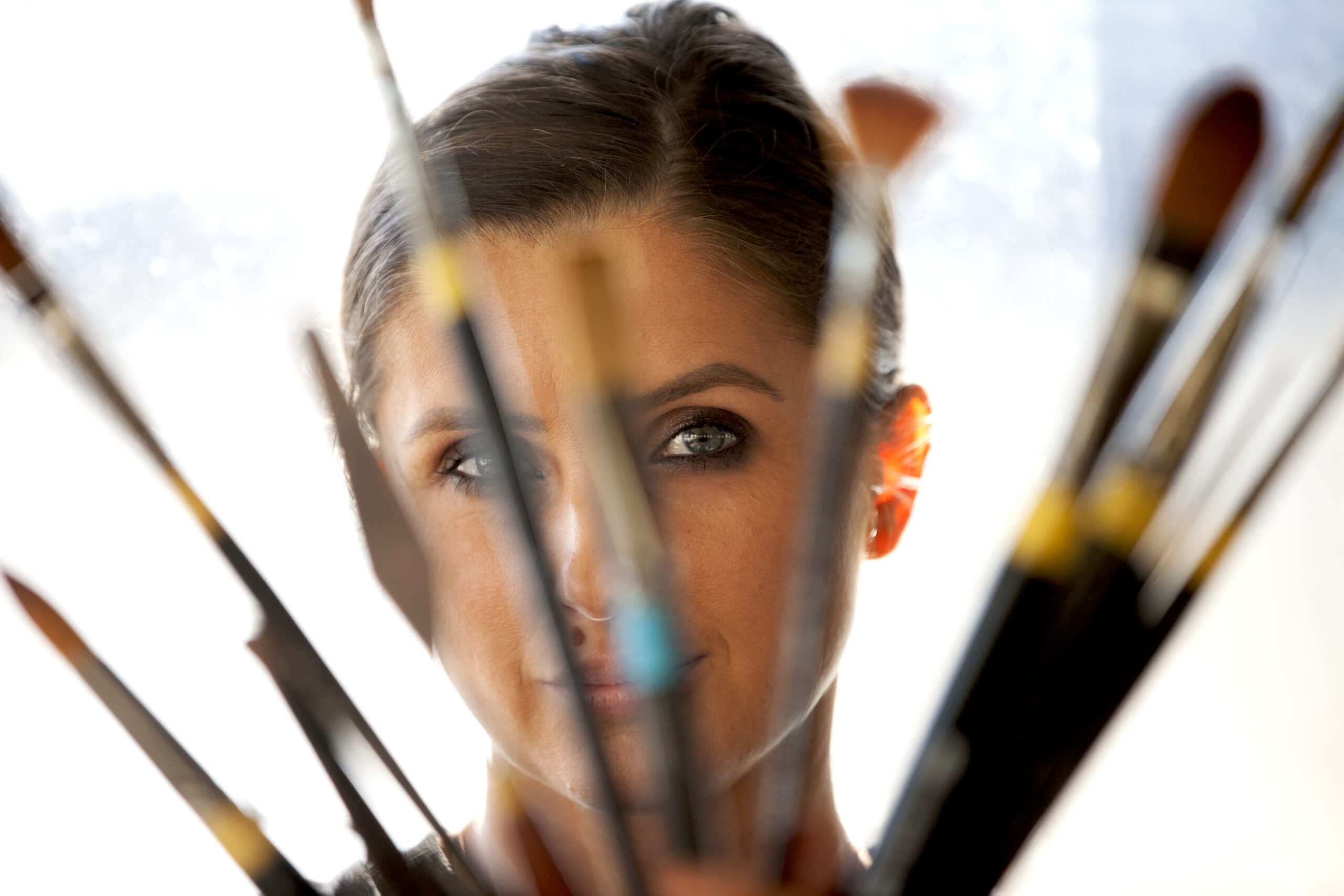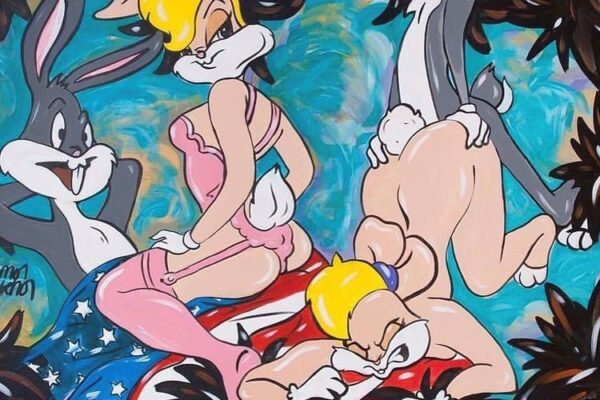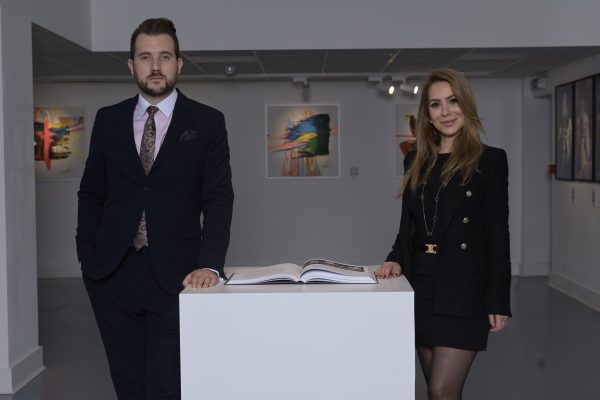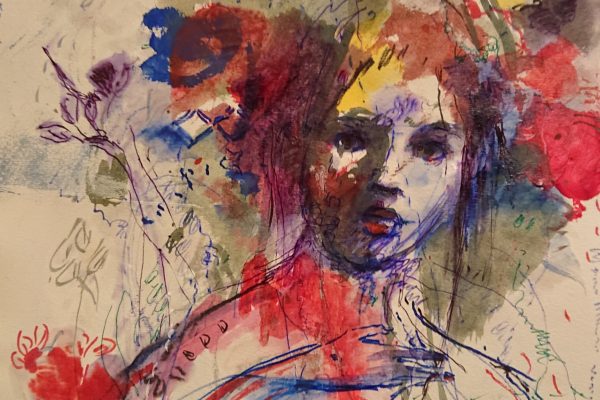Exclusive interview with James Gillick
FIGURATIVE PAINTER James Gillick lives and works in a quiet, beautiful backwater of rural Lincolnshire, England where he runs his busy studio. He makes all his materials by hand using techniques that date back to the 17th century. James’ work ranges from the smallest of still lifes, including game paintings to life-size horse paintings. He also works on a wide variety of commissioned projects including portraiture and historic restoration.
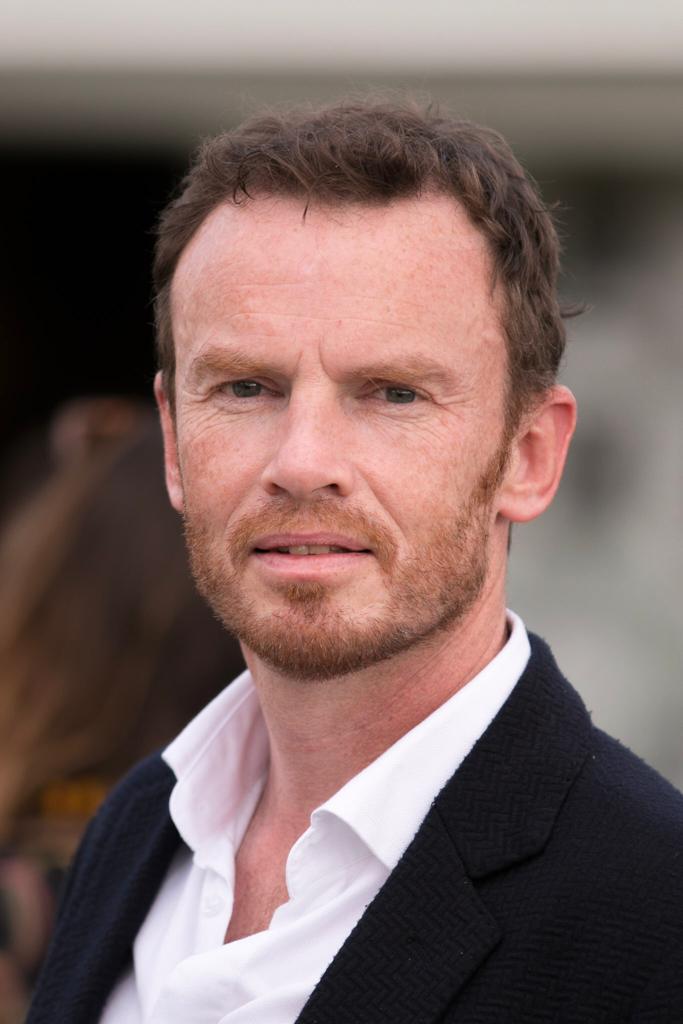
How long have you been an artist?
Since people started calling me one! I was always going to be a painter; I was called ‘the painter’ in my family from a young age – before I was aware of it really.
When did you get started?
After completing a failsafe degree in Landscape Architecture, I came home and studied in the billiard room in my Mum and Dad’s house for 2 years. During that time and under my parent’s critical eye, I broke down the entire method of painting that I had been taught at school by finding, reading and practising historical instructions on art technique. I settled upon a technical period which I thought very beautiful – and amazing halfway point between the very clear lines of medieval painting and the formless paintings of the later 19th Century in which everything is just blocks of colour and tone. There exists a sweet spot in the 17th and 18th century, where artists both delineated objects exquisitely and their sense of colour was beautiful. What is more, the substructure of their paintings was extremely well thought out; they produced very beautifully made objects. In those two years at home, I settled in that period and fell in love with the set of techniques of artists around that time. I set up as self-employed in 1996.
What’s the most challenging part of your work?
I get stage fright. Stage fright can get greater as a career progresses. As small successes pile up behind one, one starts to look over one’s shoulder and start questioning whether one has the physical strength and stamina to replicate what was possible when young. Terrifying!
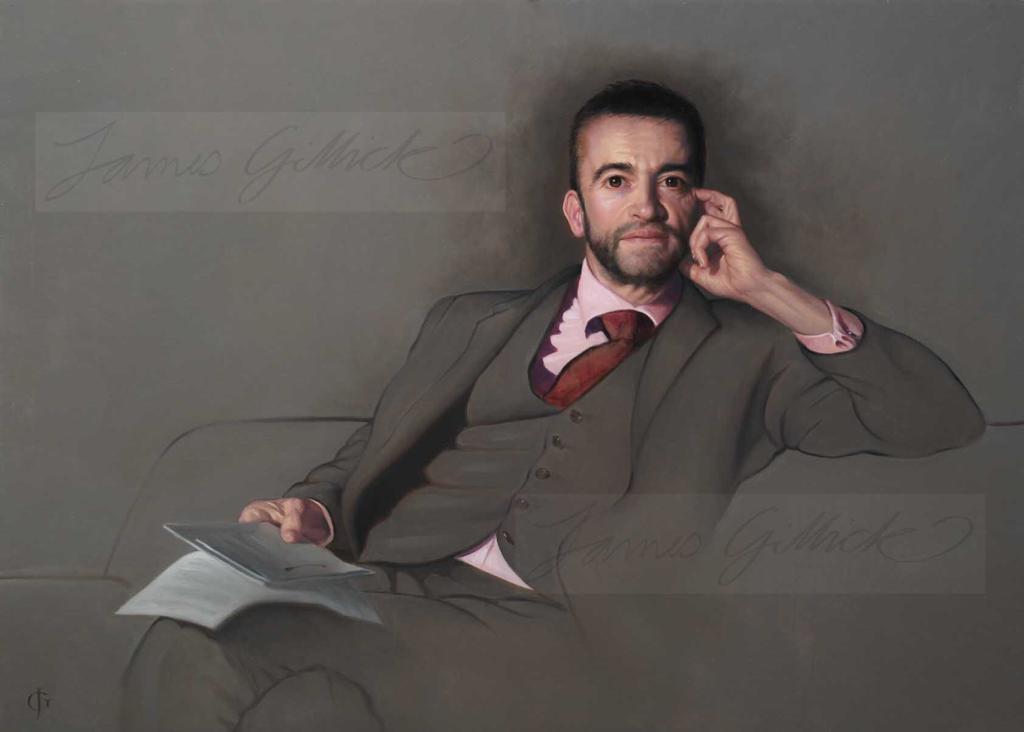
What’s your background?
I come from an exceptionally large, artistic family – I have nine brothers and sisters and hundreds of cousins, nephews and nieces. We have been involved in the arts for several generations now. My great uncle, Ernest Gillick was a well-known monumental sculptor. You can see his work on the Royal Academy façade, on Marble Arch, the Glasgow Cenotaph and so forth. His wife, Mary Gillick was a famous medallionist who designed the Queen’s portrait for the UK’s post-decimal coinage (the portrait with the ribbons flowing from the back of the Queen’s hair). My cousin, Liam Gillick is a proper big cheese in the arts, a Turner Prize nominee and all the rest. My twin brother, Theo is a well-known sculptor.
How do you choose the subject of your paintings? What’s your favourite subject to paint?
I like simple (as in not overly complex), strong and true images, people, situations and objects. In painting, I gravitate towards those sorts of things.
What is your creative process like?
I am orderly but quite scruffy – everything has a place but I’m not enormously tidy. Some painter’s studios are chaotic in the extreme while others are pristine and white, everything in a nice box. I don’t have everything under control, but my workspace is reasonably tidy and my processes very systematic and orderly.
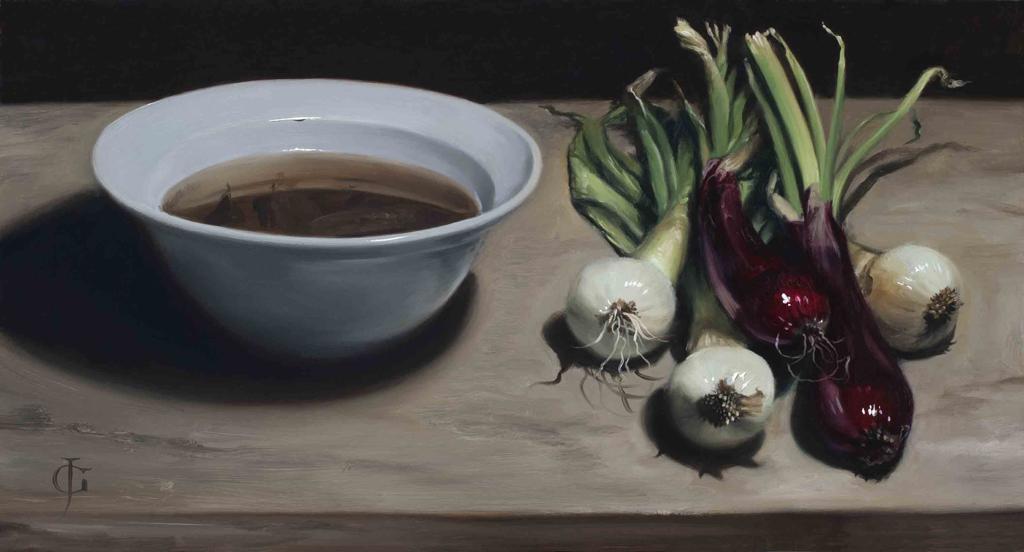
Has your style been changed over the years?
No, not since I was about 13-14 years old. The mark that I make with my hand is unchangeable. But I don’t think I’ve ever come close to producing something as good as I could do – I’m still trying to work out how to paint! I’m still trying to find what things actually are by looking honestly at things
Why did you choose oil paintings?
The oil medium choose me! Oil paints match a certain way of looking, a certain methodology and certain type of hand movement. By contrast, watercolour doesn’t match me at all. But oil painting is a very close match to the way that I tackle problems – fairly systematic, but very direct and quite quick. For me, it is a beautiful medium.
Do you have any artwork that you’re most proud of and why?
I’ve never been proud of my own paintings. However, the paintings I produced after the year 2000, (the year our daughter, Rose died) that have a solemn and melancholy character that is special to me. That set of paintings got to the heart of a part of me which was very honest. Sorrow, washing up the shore onto dry land like an unexpectedly large wave, was a painful but educating experience. Other people own all those paintings now.
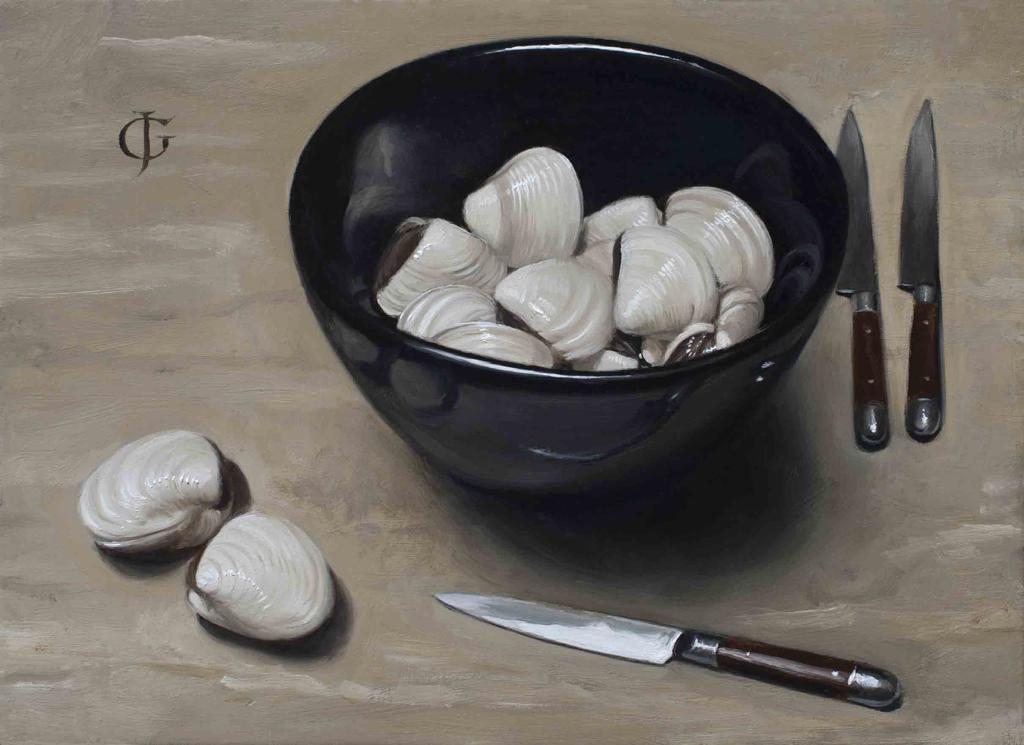
Do you have a painting that made you successful?
Not really, I credit the kindness and advice of other people with making me successful. There are people that I pray for regularly because they’ve ‘saved my bacon’ quite a few times.
What is your most important tool and is there something you can’t live without in your studio?
My paint-making table. I go through brushes about once a year but become fond of the good ones in a batch. I like my palette – I made it when I was 19 and I still use it exclusively. I’ve been using the same block of marble and marble muller to make my paints for 20 years. I love those things because they’ve generated an enormous amount of happiness for me.
What does art mean for you?
I don’t like post Modernism – despite all the guff that’s written about it, it’s no more than the subprime market in art objects – the trick of selling nothing for something. Though I’m often struck by expressionistic art made by people who have suffered an inflicted trauma (such as that produced by post-War Jewish artists), I’m not big into the contemporary middle-class self-expressionism that has flowed from it – it’s a bit pathetic. I like the opposite of that: I like the art of those who seek to describe a place that they know exists, but they don’t inhabit. I’m one of those artists. I’ve always found myself ugly, ill at ease, agitated, not at peace. The world I try to describe is the opposite of those things – my idea of heaven’s foretaste.
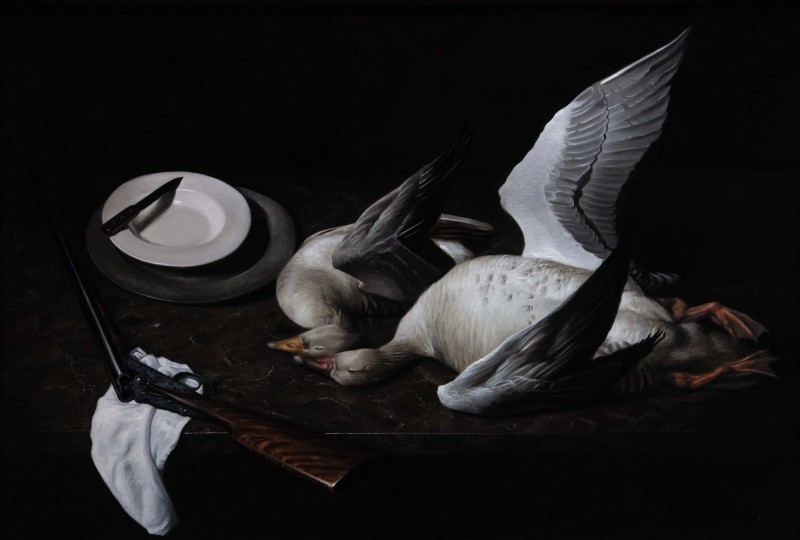
Do you think this makes you different from other artists?
Sad to say, the thing that makes me different is that I’m better than others. Beyond amateur level, the Arts are very like the 100m – some people are just faster than others! And I was always better than a lot of other people in a wider spectrum of fields specifically useful to art – faster, quicker, can concentrate for longer, natural capacity to absorb relevant information, natural enthusiasm, natural problem-solver and so forth. It is not nice writing that, but it is key that young artists cure themselves of any notion that there is a trick involved in becoming an artist.
How would you describe your paintings to someone that has never seen your art?
Figurative, “fuddy-duddy” – an old git who potters around dreaming about the past.
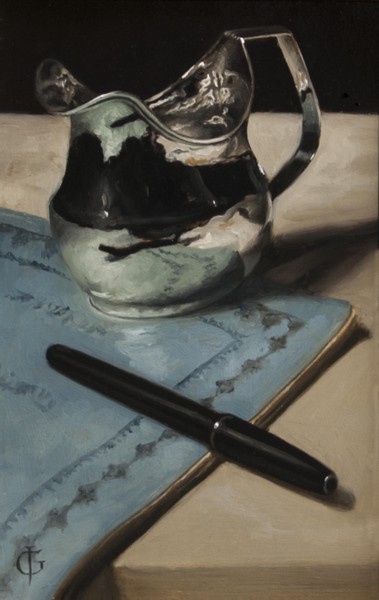
Any advice for the new generation of artists?
Get to it, I guess. There are a lot of young artists that want to be an artist because it’s cool, but it’s simply very hard graft. So, get cracking.
Do you have any projects coming soon?
All exhibitions have been cancelled until 2021. My work can be viewed using the amazing augmented reality tool on my website. I’ll be exhibiting virtually until next spring – early May to late June and then a little in November and December.
Do you have a dream project?
Many, none of which will come to pass. I’d like to decorate a cathedral but that’s not going to happen.
Interview by Kamila Krzyzaniak
www.gillick-artist.com
[email protected]
